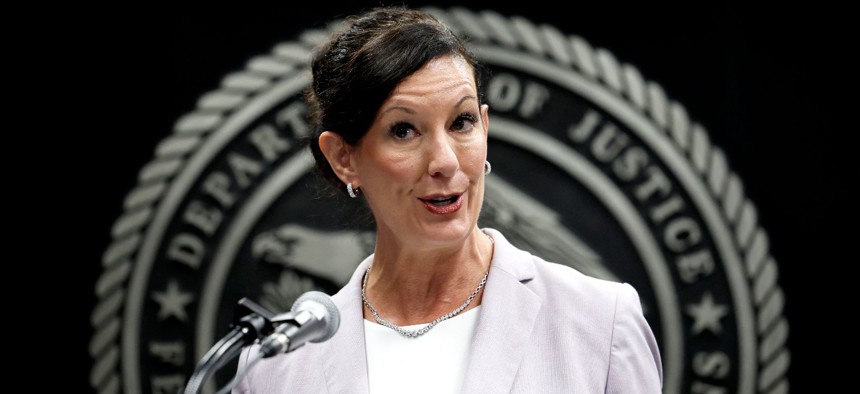Management of the Federal Prisons System Is Added to GAO’s High-Risk List
The federal government made improvements in other areas including veterans health care and the Postal Service’s financial viability.
“Strengthening management of the federal prisons system” was added to the latest version of the Government Accountability Office’s high risk list released on Thursday.
The list, which is updated every two years, details federal programs and operations that could be susceptible to waste, fraud, abuse or mismanagement or are in need of reform. The prison entry was the only new one added for the 2023 list, although GAO made two off-cycle additions in 2022: the unemployment insurance program and the Health and Human Services Department’s leadership and coordination of public health emergencies.
“The basic story with this high-risk update is that there’s been good progress in certain areas due to congressional and executive branch actions, but there’s still serious, very consequential problems that need to be addressed,” Gene Dodaro, comptroller general and head of GAO, testified before the Senate Homeland Security and Governmental Affairs Committee. “We’re adding management of the [Federal] Bureau of Prisons, there’s been problems with staffing, which has led to some concerns about inmate and staff safety and also their efforts to evaluate programs that are intended to help deal with the recidivism issue.”
The GAO report also noted that the prisons bureau “has consistently experienced several leadership changes.” Colette Peters, who became the bureau’s director in August and brought hope for reform, is the sixth director or acting director the agency has had in six years.
GAO identified management of the federal system as an “emerging high-risk issue” in March 2021 and since then the Bureau of Prisons has addressed 22 of the auditors’ recommendations, but there are still 28 recommendations that need to be fully addressed. Moreover, Charles Johnson, managing director of GAO’s homeland security and justice team, testified that the bureau's staffing level is 15% below its authorized level.
“Enhancing management of staff and resources, and improving the planning and evaluation of inmate programs, would allow BOP to more effectively deliver services, enhance its emergency preparedness and safety, determine if its investments are facilitating inmates’ successful reentry into the community, and effectively implement the First Step Act,” the report stated. “Successful implementation of the [2018] First Step Act could reduce the amount of time inmates serve in prison, the recidivism among federally incarcerated people, and costs to the U.S. taxpayer.”
The issues the Bureau of Prisons has faced have not been a secret, as documented by the Justice Department inspector general, lawmakers, the bureau’s union and previous GAO reports.
“I regret our efforts since 2021 were not sufficient to prevent this placement on the high-risk list; however, I am confident the processes and procedures now in place will ensure future success,” prisons chief Peters said in a statement. “We have taken concrete steps that will not only meet but exceed the expectations of our external partners.”
When she came into the role she said that reversing the years-long staffing shortage at the bureau was one of her top priorities, along with improving employee wellness and agency accountability. In his fiscal 2024 budget request, President Biden proposed $8.8 billion for the Bureau of Prisons, which is a 1.7% increase over the fiscal 2023 enacted level.
Overall, two areas were removed from this high-risk list: the Pension Benefit Guaranty Corporation Insurance Programs (which was on the list since 2003) and the 2020 Decennial Census (which was on the list since 2017). One area regressed: the Defense Department’s business systems modernization. Finally, 16 areas showed progress, which included Veterans Affairs health care and the Postal Service’s financial viability.








